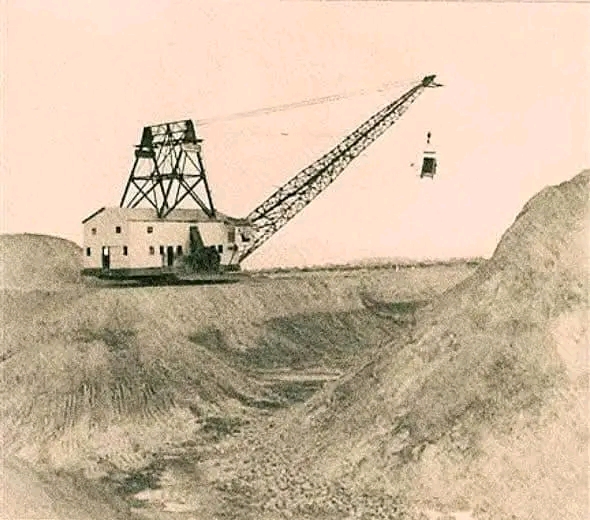Explore the history of tin and columbite mining in Jos, Nigeria. Discover how British colonial interests shaped Plateau State’s growth into a mining hub by 1903–1904.
In the early 20th century, the British colonial government was deeply invested in exploiting Africa’s natural wealth. The Jos Plateau, located in central Nigeria, became a prime target due to its high concentration of valuable minerals—specifically tin and columbite. These resources were essential to global industries, making Jos a strategic outpost for British imperial ambition.
The discovery of tin in the area prompted Britain to intensify its foothold in Plateau State, which at the time was relatively isolated. The terrain, although challenging, offered immense geological promise that colonial geologists and explorers were eager to exploit.
Geological Riches of the Jos Plateau
The Plateau’s unique geological formation contributed to the abundance of tin and columbite. Erosion over millions of years left rich alluvial deposits in the valleys, especially around Delimi and Naraguta. These surface-level minerals were easily extracted by early mining techniques, which required minimal drilling technology.
Geologists from Britain were astounded by the deposits’ richness. Tin was particularly important for alloy production, while columbite later gained significance as a source of niobium, vital for steelmaking and electronic components.
The 1903–1904 British Prospecting Mission
In 1903, a British-led prospecting team supported by soldiers and local carriers made its way into the Delimi Valley. This was more than just an exploratory mission—it was a military-backed expedition to secure resources and claim the area.
Within a year, by 1904, the foundation for organized mining was laid. Tin samples collected during this time confirmed the commercial viability of large-scale operations, prompting rapid colonial investment in the region.
Establishment of Mining Operations
Once the deposits were confirmed, the British wasted no time. By 1905, mining camps began springing up around Jos. The colonial government built narrow-gauge railways to transport tin to the ports in Lagos and Calabar.
Early methods included panning and sluicing, eventually giving way to mechanized dredging and open-pit mining. These methods, while efficient, caused major environmental disruptions that would become apparent only decades later.
Tin and Columbite: What They Are and Why They Matter
Tin is a silvery-white metal used mainly in alloys like bronze and solder. It played a pivotal role in industrializing Europe. Columbite, often found alongside tin, contains niobium—a metal critical for aerospace and electronics manufacturing today.
At its peak, Nigeria was one of the world’s top tin exporters, with Jos serving as its mining heart.
Role of Jos in Nigeria’s Colonial Economy
By the 1920s and 30s, Jos had become a key node in the British colonial economy. Tin exports from the region soared, generating significant revenue for the empire.
The British imposed taxes and monopolized mining rights, often sidelining local communities. These economic policies helped build colonial infrastructure but did little to improve local livelihoods.
Life in a Mining Settlement
Jos transformed from a quiet plateau town into a bustling industrial center. Thousands of workers from all over Nigeria migrated there for jobs. This influx turned Jos into a melting pot of cultures, with markets, railway stations, and mining quarters defining its urban character.
Indigenous Labor and Resistance
Most of the mining labor came from local and neighboring ethnic groups. Many were conscripted or forced to work under harsh conditions. Over time, resistance grew—ranging from subtle acts of non-compliance to organized labor movements that demanded better pay and conditions.
Environmental Consequences of Tin Mining
Mining activities led to severe land degradation. Forests were cleared, valleys were flooded, and riverbeds were disrupted. Toxic waste from mining polluted water sources, affecting agriculture and community health.
These consequences, largely ignored during the colonial period, are still visible in the region today.
Infrastructure Built Around Mining
The need to support mining operations led to the development of significant infrastructure. Railway lines, like the one from Jos to Port Harcourt, enabled tin exports. The colonial government also introduced electricity and piped water in Jos—rare luxuries in other Nigerian towns at the time.
Jos as a Cosmopolitan Hub
The city’s rapid development attracted people from different ethnic, linguistic, and religious backgrounds. Hausa, Berom, Igbo, Yoruba, and European settlers coexisted, making Jos one of Nigeria’s most diverse cities.
This diversity fostered unique cultural exchanges and helped shape Jos into a modern urban center.
Decline of Tin Mining Post-Independence
After Nigeria gained independence in 1960, the mining industry initially remained robust. However, several factors soon led to its decline. The global tin market crashed in the 1980s due to overproduction and the rise of synthetic alternatives. This, combined with mismanagement and lack of reinvestment in mining infrastructure, caused many tin companies to shut down operations.
Columbite, once considered a valuable by-product, also lost its luster as global technology advanced and alternative sources were developed. By the 1990s, much of the formal mining activity in Jos had ground to a halt, replaced by informal and illegal mining operations.
Legacy of Colonial Mining in Contemporary Jos
Despite the industry’s collapse, the legacy of tin and columbite mining continues to shape Jos. Old mining ponds now serve as makeshift fishing spots or have been repurposed for housing and recreation. The town’s grid layout, originally designed to serve British colonial needs, remains visible in modern urban planning.
More importantly, the mining history instilled a sense of industrial identity in the people of Jos. Many families trace their roots to mining workers, and stories of prosperity and hardship are passed down through generations.
Reviving Mining Responsibly in Modern Times
With Nigeria’s renewed focus on diversifying its economy beyond oil, mining has returned to the spotlight. There are calls for the government to invest in sustainable, eco-friendly mining practices and to regulate informal operations that often exploit workers and damage the environment.
Modern technology now allows for more efficient extraction and reduced environmental impact. Satellite mapping, AI-driven geological surveys, and water reclamation techniques offer hope that Jos’s mineral wealth can be tapped responsibly.
Preservation of Mining Heritage
Several efforts are underway to preserve the mining history of Jos. The National Museum in Jos houses mining relics, documents, and photographs—including works by Tudun Tsira. Educational tours, archival research, and academic interest continue to grow.
There’s also a push for the establishment of a Mining Heritage Park, where tourists and students can learn about the city’s rich industrial past and its role in shaping Nigeria’s early economic development.

FAQs about Tin and Columbite Mining in Jos
1. Why did the British focus on mining in Jos?
The British were drawn to Jos due to its rich deposits of tin and columbite, both of which were in high demand for industrial uses in Europe. The Plateau’s geology made mining relatively easy and profitable.
2. What were tin and columbite used for?
Tin was used primarily in the manufacture of alloys and soldering materials, while columbite, a source of niobium, was crucial in producing heat-resistant steel and electronic components.
3. How did mining affect local communities?
Mining transformed Jos into an economic hub but also led to environmental degradation and the exploitation of local labor. While it brought infrastructure and jobs, it also disrupted traditional ways of life.
4. Is mining still active in Jos today?
Most of the large-scale mining operations have ceased, but small-scale and illegal mining continue in various parts of Plateau State. The government is now working to formalize and regulate the sector.
5. What does the 1956 photo by Tudun Tsira represent?
The photograph is a historical snapshot of Jos during the height of its mining boom, offering a visual record of colonial industrial activity, labor force dynamics, and the physical transformation of the landscape.
6. Can Jos regain its mining prominence?
With proper investment in technology, sustainability, and regulation, Jos can potentially revive its mining sector in a way that benefits both the economy and local communities.
Echoes of the Mining Past
The story of tin and columbite mining in Jos is more than just a tale of mineral extraction—it is a chronicle of transformation, resistance, and legacy. From colonial conquest to post-independence decline, and now to prospects of revival, Jos has always been shaped by the soil beneath it.











